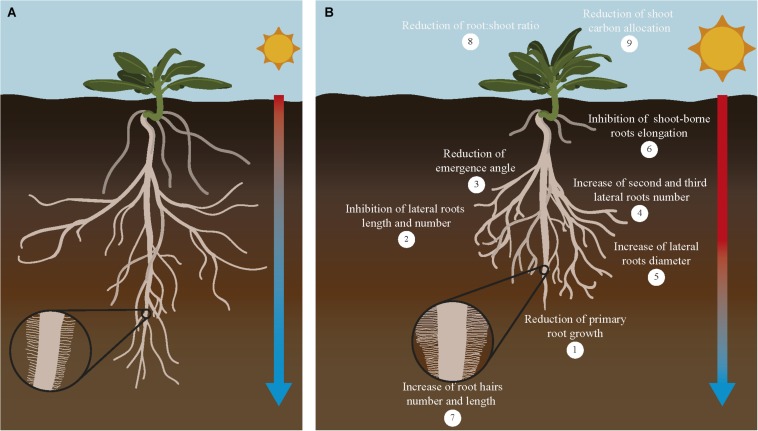FIGURE 3.
Response of major root traits to increasing temperatures in crops. Increasing temperature of the soil affects root traits related with its organization, growth and function. Root system architecture defined as the organization of the primary, lateral, shoot-borne and lateral roots is drastically altered in response to increased temperature in the soil (B) compared to plants growing in optimal conditions (A). Crops growing under higher temperatures show shorter primary roots (1), reduction of lateral roots growth and number (2) and their angle of emergence (3), higher number of second and third order roots (4) with larger diameter (5), inhibition of shoot-borne roots (adventitious and nodal roots) elongation and number (6) and increase of root hairs number and length (7). In addition, this overall reduction on root system growth causes a reduction of root:shoot ratio (8) and reduction of root carbon allocation (9). As a consequence of all these changes, nutrient and water uptake conducted by the roots for the whole plant is compromised and crop yield is severely affected. Although most of these effects are detrimental to root growth, some responses alleviate this situation by increasing root:soil surface [increase in number of second to third roots number (4) and number and length of root hairs (7)], improving water efficiency uptake [increase in diameter of roots (5)], or increase in root depth (lower root angle). Interestingly, these root responses coincide with root traits associated with cultivars more tolerant to high temperatures. A comprehensive evaluation of these traits and their impact on crops productivity will help to decide which root traits are more valuable to be incorporated to breeding programs designed to improved crop yield under climate change conditions.

